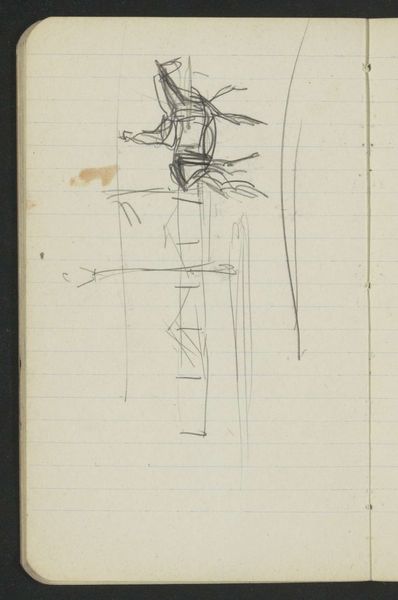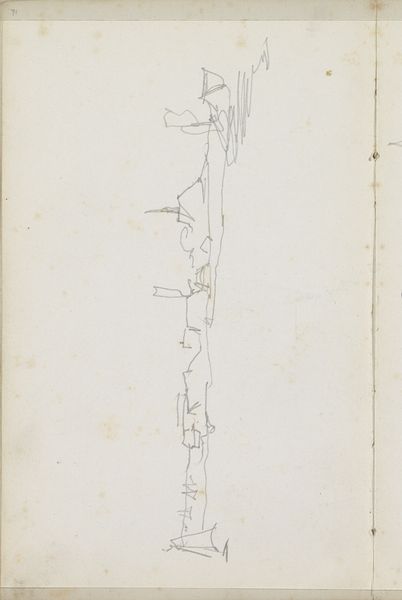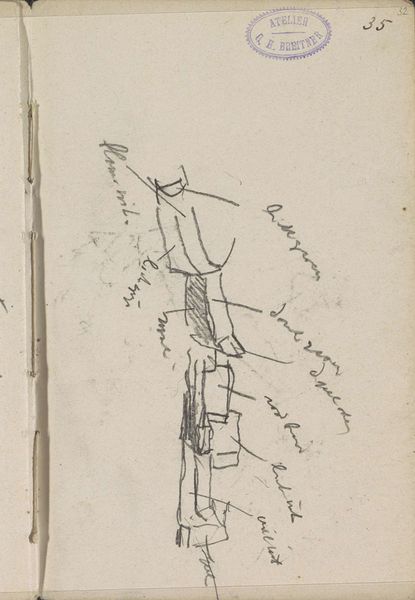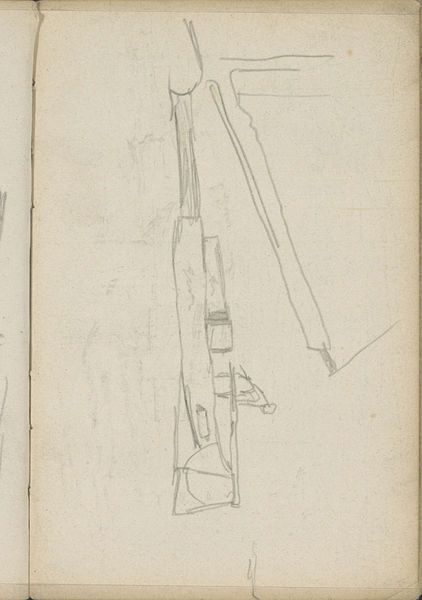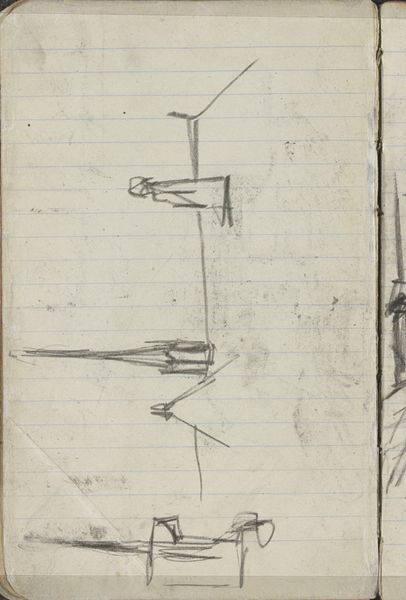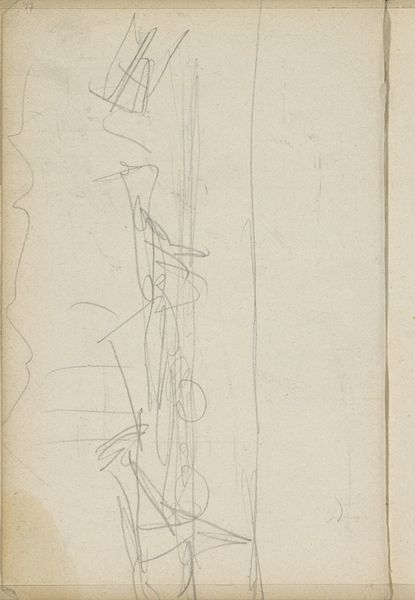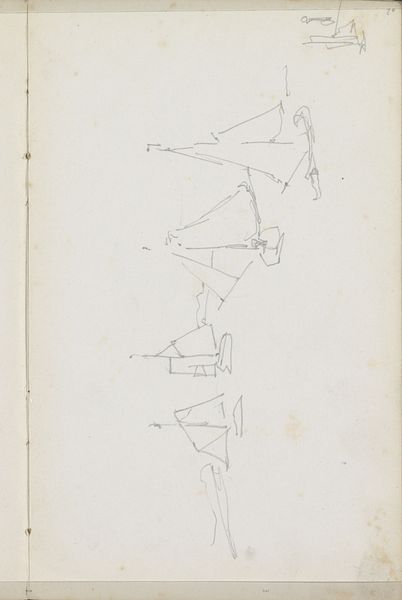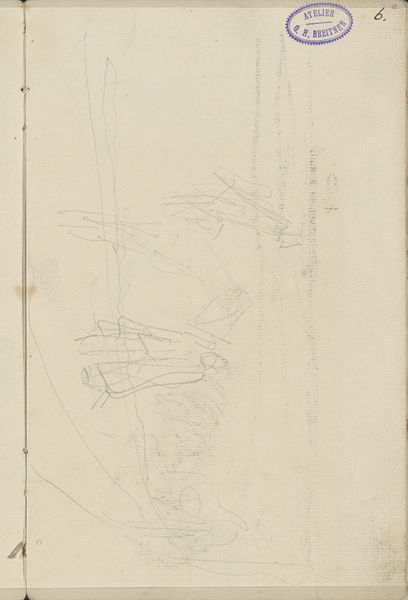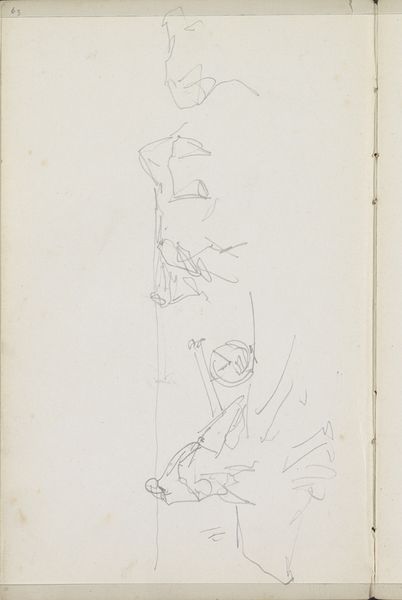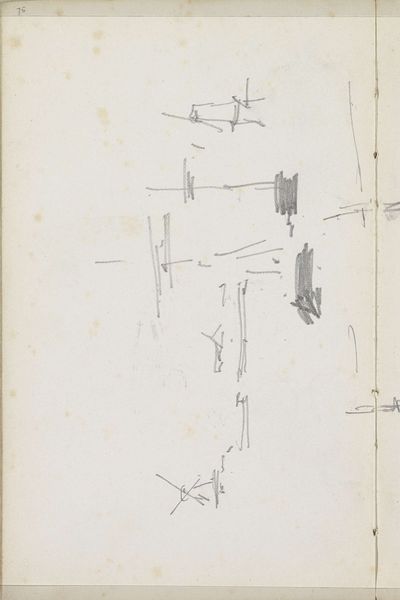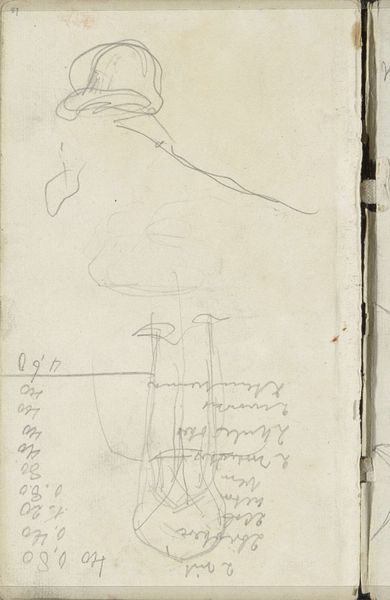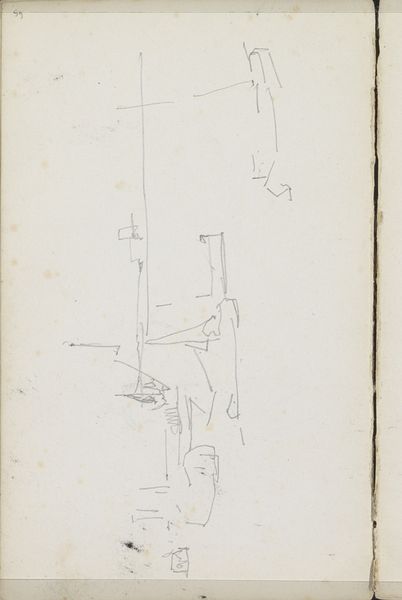
Paarden en figuren, mogelijk op de boulevard van Scheveningen 1875 - 1934
0:00
0:00
Copyright: Rijks Museum: Open Domain
Curator: Ah, this little drawing offers such a beautiful glimpse into Israels' process. "Paarden en figuren, mogelijk op de boulevard van Scheveningen," dating from 1875-1934, resides here at the Rijksmuseum. Just pencil on paper, but bursting with a frenetic energy. Editor: My first impression is one of swiftness, almost like catching fleeting moments on the shore. But there's something incomplete, almost anxious, in its rapid execution. I notice that the pencil lines appear hurried, as if trying to capture a movement about to vanish, rather like the fleeting nature of labor by the sea and changing leisure activity. Curator: Precisely! Israels, a keen observer of modern life, seemed intent on capturing the vivacity of the Scheveningen boulevard. You get this wonderful sense of atmosphere. And don't you think the line work perfectly captures the movement of horses and people? It reminds me a bit of Degas' dancers. Editor: Yes, but Degas had ballet and artifice and all the couture that went into its fabrication. I look at the materiality and social context surrounding this, and note the bare paper, and economical lines – suggesting limited resources. He doesn't offer detail; only raw essence—a commentary, perhaps, on a working life, of its ephemerality in modern life. Also, consider the horizontal lines on the page that peek from beneath the image. Are they part of a cheap notebook, perhaps mass-produced and consumed by the literati or members of the artist’s society? Curator: Interesting perspective. The speed, for me, communicates freedom more than constraint, to capture the spontaneous nature of that experience. One of his early artistic pursuits— the boulevard a subject worthy of an Impressionist eye. It is what one wants, rather than merely what they have access to. And look at how economical those lines really are—he says so much with so little. The movement, the light, even the feeling of being there. Editor: And while those sketch lines give the figures immediacy, one wonders whether such brevity, combined with the ready availability of cheap paper, represents an increasing commodification and throwaway consumer attitude that has seeped into artmaking, as labor is valued less with technological advances? The essence may, however, be hiding how processes reflect on labor. Curator: Perhaps, but maybe it’s a desire to capture an immediate personal impression and not the need to mass produce copies! I will choose the light and energy over darkness! Editor: A sunny note indeed, an interpretation as vibrant and energetic as the lines on that page! Curator: And the debate itself gives even more nuance to that frenetic page.
Comments
No comments
Be the first to comment and join the conversation on the ultimate creative platform.
